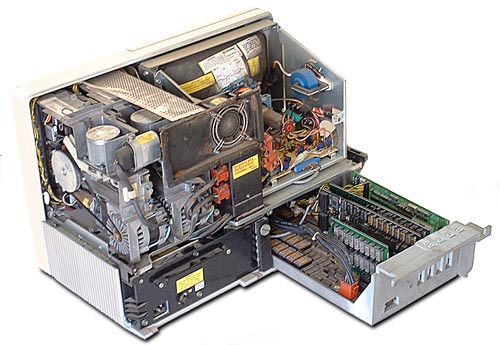|
|---|
Partial History of the IBM Computers |
- 1967: IBM builds the worlds first floppy disk.
- 1967: IBM introduces the worlds first 8" floppy disk.
- 1973: IBM introduces the IBM 3340 hard disk unit, known as the Winchester.
- 1975: September - IBM's Entry Level Systems unit unveils "Project Mercury", the IBM 5100 Portable Computer.
- 1981: September - IBM releases the IBM 5150 PC Personal Computer.
- 1982: April - Eight months after the introduction of the IBM PC, 50,000 units have been sold.
- 1982: May - Microsoft releases MS-DOS 1.1 to IBM, for the IBM PC.
- 1982: June - The first IBM PC clone, the MPC, is released by Columbia Data Products.
- 1982: August - After one year of production, IBM ships the 200,000th IBM PC.
- 1982: November - Compaq Computer introduces the
Compaq Portable PC, the first 100% IBM compatible. It cost Compaq US$1 million to create an IBM-compatible ROM BIOS that did not
violate IBM's copyright.
- 1982: At the West Coast Computer Faire, Davong Systems introduces its 5MB Winchester Disk Drive
for the IBM PC, for US$2000.
- 1983: March - IBM announces the IBM PC XT, with a 10 MB hard drive,
128KB RAM and a 360KB floppy drive. It costs US$5000.
- 1983: November - IBM announces the IBM PCjr.
It is US$700 for the bare configuration.
- 1984: February - IBM introduces the IBM Portable PC.
- 1984: March - IBM ships the IBM PCjr. It uses the 8088 CPU, 64KB RAM, and one 5.25-inch disk drive, but no monitor. It costs US$1300.
- 1984: August - IBM announces the PC AT, for US$4000-6700.
- 1985: April - IBM abandons production of the IBM PCjr.
- 1986: April - IBM announces the IBM PC Convertible, 80C88-based, 256K RAM, and two 720K floppy disks, for US$2000.
- 1986: April - IBM discontinues the IBM Portable PC.
- 1986: September - IBM announces the IBM PC-XT Model
286, with 640KB RAM, 1.2MB floppy drive, 20MB hard drive,
serial/parallel ports, and keyboard for US$4000.
- 1987: IBM discontinues the IBM PC (model 5150) line.
Source:
Chronology of Events in the History of Microcomputers
| |
|---|
|




